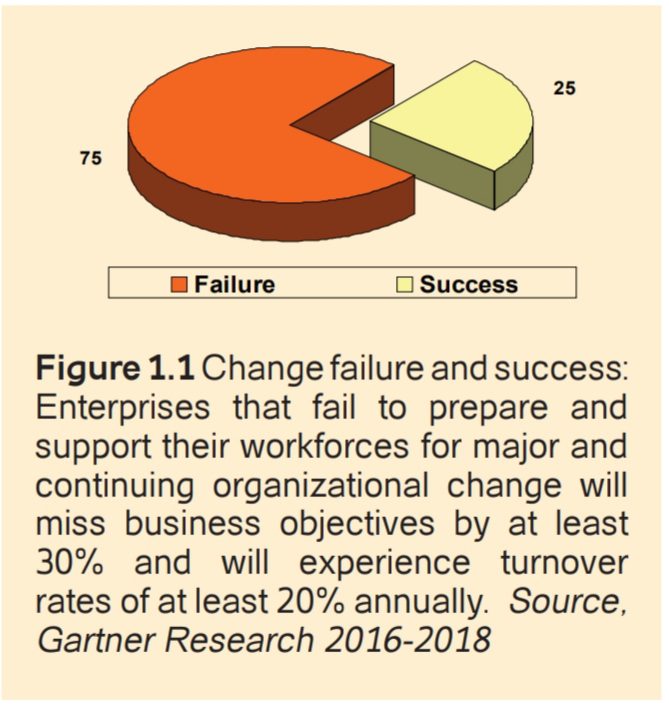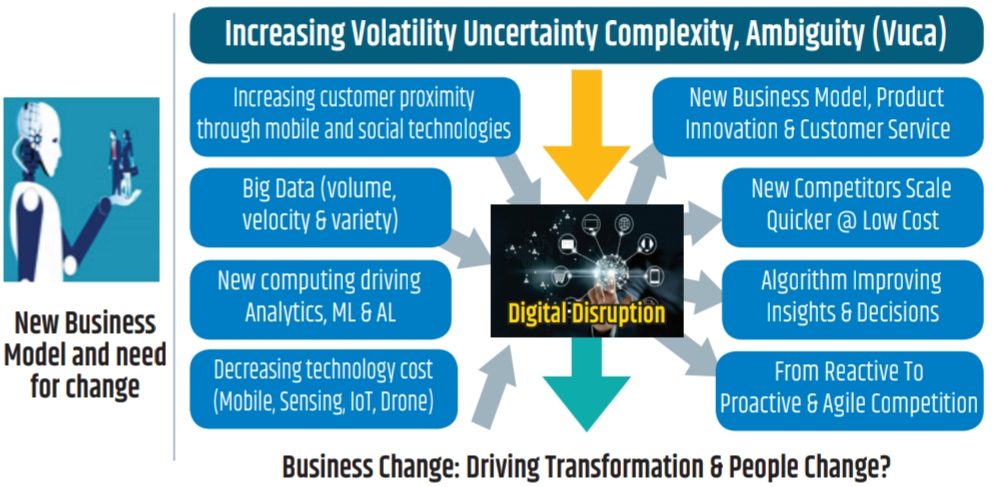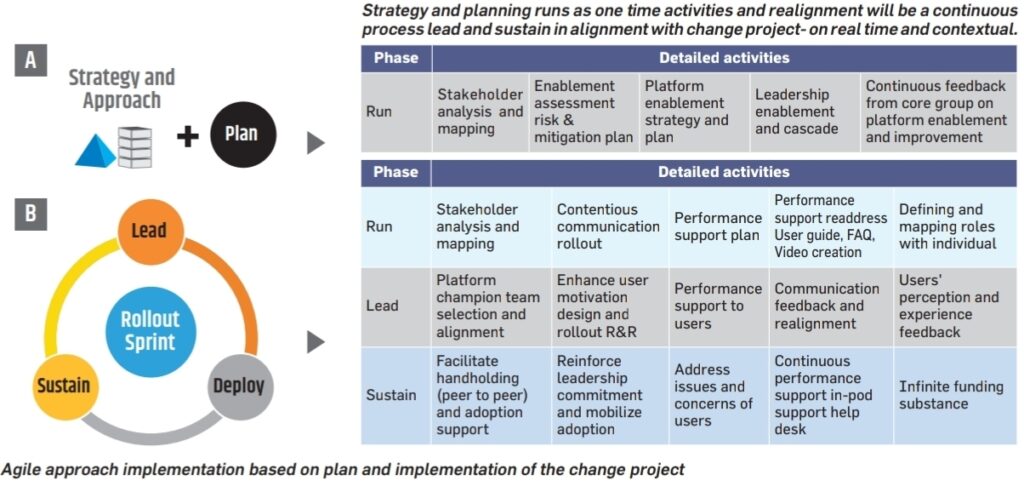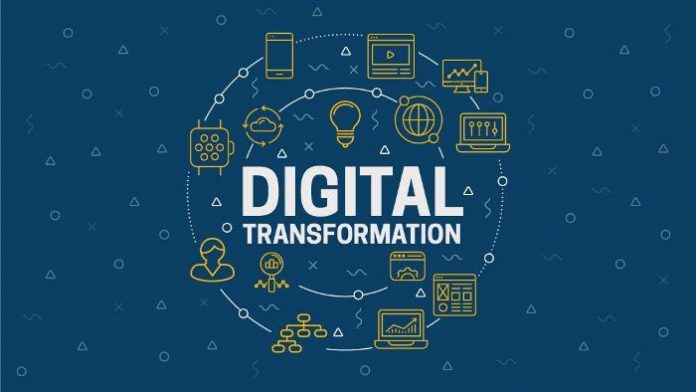The world is at the beginning of a digital revolution; anything and everything that can go digital is going digital, at an exponential rate and no organization is immune. Research finding says since 2000, 52% of the Fortune 500 have disappeared, they’ve either gone belly up or been acquired, or closed their doors.
Moreover, according to Harvard Business Review, the life expectancy of a company on the Fortune 500 has plummeted from 75 years to a mere 15 years. Today the key driving force behind companies’ ability to flourish or fail in change and adoption to the digital disruption. We’re in a time when there’s more data than ever before, and new types of technology increased computational capacity, and IT landscape are available at cheaper than ever before.
These factors create the perfect storm for companies and are impacting the lives of each and every individual for fast adoption and driving transformation in business and growth. The major challenges, today every organization is facing: how to maximize the usage of digital transformation, harvest maximum value and improve overall productivity & growth. Today, change management is a much more discussed topic in the organization globally.
“A survey of fortune 500 executive revealed that 87% change management are failed to deliver promises and a very common theme among these failures is lack of understanding of “power of the collective human system” & “culture” which are key to managing human experience and adoption to change.”
Among the company and CXO/CIO level today, digital transformation and change management are more relevant topic than ever, research analyst predicts that by the end of 2019, Digital transformation spending will reach to $1.7 trillion globally and would need structured change management approach to harvest the best business benefits.

Disruption in the business model and technology bough lots of uncertainty and complexity in the business and HR. An empirical study has been conducted to understand how to manage people change, challenges and ambiguity associated with technology transformation and ensure adoption to new ways of working (WoW). Studies say available people transformation approaches & models are not adequate in dealing with these challenges, ambiguity and ensure adoption of new ways of digital working. Various studies, models and methods have been suggested and discussed to manage transformation effectively; despite all, organizations, report high failure rate (70-75 percent) of their transformational initiatives. These high failure rates highlight the continuing need for further research and investigation.

As per the Gartner and SIM data research study, 70% of the organization failed to realize the envisaged benefit of digital transformation and the top 3 reasons for failure are related to the people aspects of change. This implies a ‘need of valid model or constructs’, for HR practitioners which can categorically focus on managing softer aspects of the people mindset, perception, culture, values, and behaviors of employees and ensure the successful adoption of digital ways of working.
The author developed an organization change management model and validated in 11 IT and consulting organizations and interviewed275 employees (across all levels) to understand and identify the transformational challenges and imperatives, to ensure a smooth transition from As-Is to To-Be, and guide organization facing disruption and need change adoption. The prime reason for this exponential’s growth in business model is due to upcoming changes in new technologies related to IoT, AI, blockchain, AR/VR, RPA, Claude computing, Machine learning, etc. and these organizations are unable to manage human aspects related to culture, perception, behaviors, values, etc.

The empirical study conducted by the author is related to organizational change answered three prime questions: (1) “need for a new practical model to manage human aspects of digital transformation” and support practitioner/ HR Manager to plan and implement change projects successfully?
If yes, (2) new change management model? If yes, (3) how this model enabled in managing human aspects to ensure success and outcome of digital transformation? Moreover, the objective of the empirical study was also to gain a new understanding of the development of change management model, test and validate existing IT organizations to gauge gaps & improve the developed model and equip HR managers/practitioners to carry out digital transformation projects more effectively and successfully. The change management model covers organizational digital transformation management in three phases called Plan, lead and sustain (as shown in figure 1.3) change (PLS) to ensured smooth transition and success of people change.
PLS model emphasis more on agile an approach based on change context. To ensure buy-in and commitment from impacted stakeholders (leaders, managers, employees). This transformational change model emphasized continuous employee’s education and communication (on benefits of new ways of working and change) to all impacted stakeholders by applying the AUPIC approach (Awareness, understating, participation, involvement, and commitment) to manage people change and adoption.
This model of digital change management implementation highlighted on addressing human aspects of challenges and enablers:1) Identification of employees risks & (proactively) mitigate them through various change interventions (continuous education & stakeholders communication, early buy-in from leaders & managers, cascade change objectives & benefits through change catalyst 2) deliver effective training & adoption strategy, on-time delivery of role-based training, continuous motivation & performance support to employees 3) Continuous communication/education to all impacted stakeholder (Business leaders, managers, employees)on benefits of digital transformation, project milestones, what’s in it for me 4) leveraging informal network (social, community platform or application ) and involve employees in the early stage of change cycle.
This organizational change management model is pertinent in ensuring the success of digital transformation in an organization for better employees’ adoption and business outcome. This model also focused on an agile framework to make change interventions more contextual, real-time and effective.
The organizational change management model is developed to support the HR managers in planned and result-oriented change efforts in an organization. However, it provides scope to further customize for better value and can be utilized as a guide to HR Managers/practitioners in managing a great variety of change and digital project implementation. Although this model includes a comprehensive basket of change interventions (as shown in figure 1.3) and set of activities and outcome, the purpose is not to use a complete basket of interventions or set of activity in every change project, but to choose the best-suited ones and customize interventions based on change context. This model also suggested leveraging informal networks (what’s up, community and social app/platform), developing digital leaders, digital mindset and moreover, motivate impacted stakeholders to enable institutionalization of change as a new normal in the organization to ensure success and impact of digital transformation.
As we know today, no industry is immune and we’re in a time when there’s more data than ever before, and new types of technology and increased computational capacity are available and cheaper than ever before. These factors create the perfect storm for companies to unlock new products, internal operations, and ways of serving their customers. The availability of change management models and needed skills to meet these new challenges is on the minds of CEOs and senior leaders of enterprises large and small, across all geographies. This model can be a great use to the CEO/CXO and HR manager to manage digital disruption in a more effective way to manage human aspects to ensure adoption and building skills and workforce for the future.
Subscribe to our Daily Newsletter!









